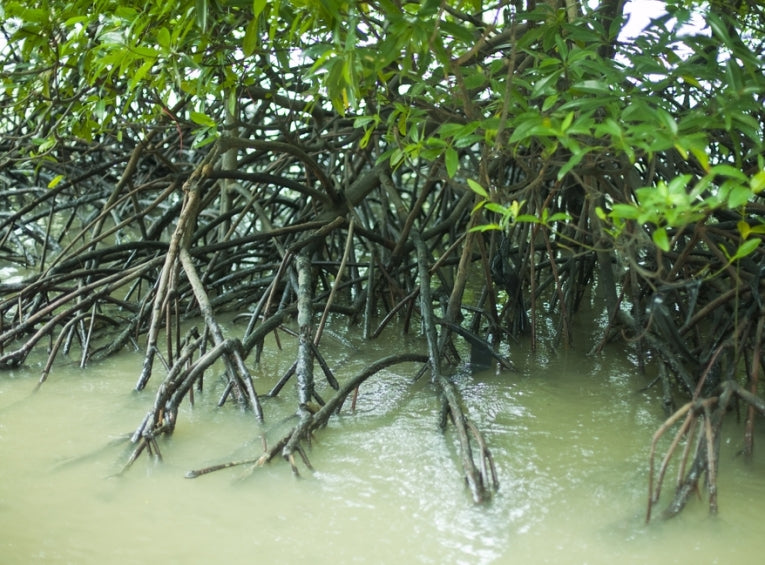Atmospheric greenhouse gases are known as GHGs. Produced from fossil fuels, deforestation and the conversion of marshes and seagrass beds, along with mangrove forests, the gases have been increasing from human activities for the last century. While we have affected the rate of increase, we must remember that the amount of these GHGs is still increasing rapidly. Coastal land-use conversion and degradation of coastal ecosystems creates a new carbon source called "blue carbon."
We are really only just starting to discover the exact amounts of CO2 released. Linwood Pendleton of Duke University, North Carolina has produced a paper, Estimating Global "Blue Carbon" Emissions from Conversion and Degradation of Vegetated Coastal Ecosystems, with a large group of fellow-scientists which elucidates this large calculation.
While these coastal strips cover 6% of the earth's forests, they make up a massive 20% of the deforestation carbon. This is 10 times the amount that they were assumed to create when simply ripping up the actual communities, making up 1 billion tons of CO2. These amounts were not guessed at because nobody had tried to take into account huge standing pools of carbon in the long-established ecosystems. Several metres of peat or other organic sediments lock CO2 into the system under anaerobic regimes until humans decide to unlock it. With oxygen once again present and its attendant aerobic bacteria, respiration rapidly converts the matter into our least favoured gas.
The sums need to be done, to calculate the global cost to our economies, and the well-used SCC or, "social cost of carbon." The marginal value of damage from climate change that can be caused by one ton of carbon in the atmosphere in 2020 is one heck of an estimate, but it comes out at $41. The authors here used that estimate to multiply the three relevant figures on "tonnage" for the three environments involved.
Mangrove losses contributed half the total blue carbon stock, with sea grasses second in the ranking because of the large area they occupy globally. Tidal marshes in fact occupy a relatively small area, so that even with a moderate to high carbon stock, they still contribute the smallest, but still substantial global emissions.

The global distribution of sea-grasses, tidal marshes, and mangroves; Credit: © PLoS ONE/doi:10.1371/journal.pone.0043542.g001
Above: Data sources: Seagrass and saltmarsh coverage data are from the United Nations Environment Programme World Conservation Monitoring Centre (UNEP-WCMC); mangrove coverage data are from UNEP-WCMC in collaboration with the International Society for Mangrove Ecosystems (ISME).
How to stop something that contributes much more to global warming than loss of tropical forests? Obviously it's important to try. Landowners have incentives to convert these areas at the moment because market forces give them profits from the new usage (farming, forming shrimp ponds, land reclamation, etc.). Using the forest carbon sequestration system used so much recently, one or two mechanisms exist to pay governments or landowners for coastal area conservation. With coastal vegetation's improvement of water quality by filtering becoming more evident, it is also necessary to point out how young fish very often use these nursery areas to thrive; storms are buffered and even how many other (species such as manatee) are dependent on these habitats.
Together, these arguments point towards the establishment of a global carbon market like those established by the Kyoto agreement. The example of mangrove forest is suggested as the most significant first step. They have very large carbon stocks just below the surface and so could be relatively easily estimated. I'm sure their conservation would be much appreciated in any case!
Still important are this team's efforts (using uncertainty analysis) to underestimate amounts of CO2 and even CH4 (methane) that are released. This conservative approach of course avoids obvious criticism, and encourages those in power to accept upper estimates above the mean. However, the errors involved in always accepting low estimates can be grave. New research therefore will help resolve various problems and tend to raise these estimates of blue carbon quite significantly. This current research has definitively stated the likely importance of blue carbon conversions and the unaccounted emissions that have very much higher estimates.










